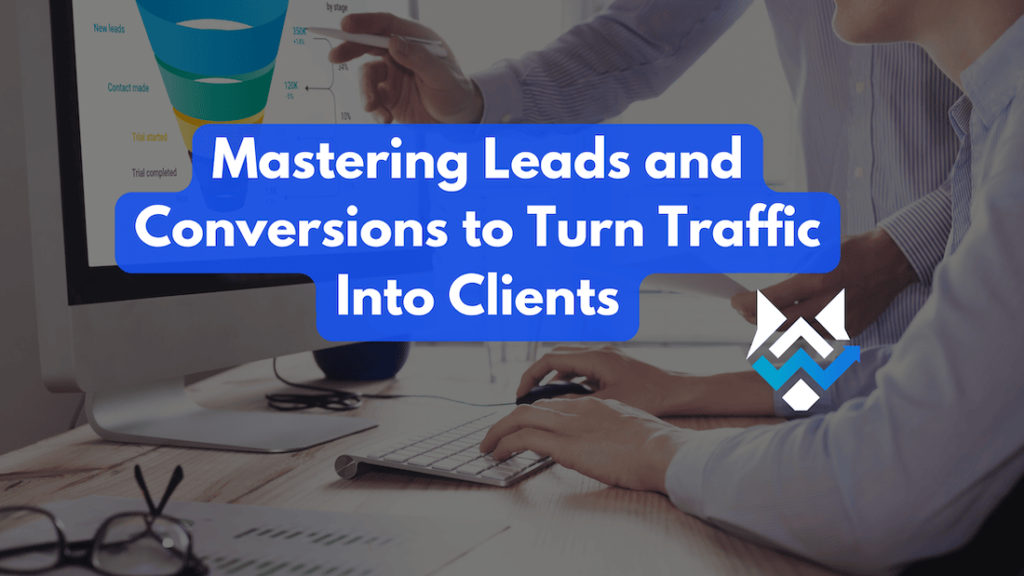In today’s competitive online landscape, driving traffic to your website is only half the battle. The real challenge lies in converting that traffic into paying customers. This is where conversion rate optimization (CRO) comes into play. CRO involves optimizing your website and marketing efforts to increase the percentage of visitors who complete a desired action, such as making a purchase, signing up for a newsletter, or filling out a contact form.
By mastering CRO, you can maximize the value of your existing traffic, reduce your cost per acquisition (CPA), and ultimately increase your revenue. In this guide, we’ll cover proven tips and strategies to help you turn traffic into revenue and achieve higher conversion rates.
Use Data-Driven Personalization
Personalization is another effective strategy for improving conversion rates. By tailoring your website’s content and offers to each visitor’s preferences and behavior, you can create a more relevant and engaging experience.
Here are some ways to personalize your website for CRO:
- Dynamic content: Display personalized content based on a visitor’s browsing history, geographic location, or past interactions with your brand.
- Personalized recommendations: Use data-driven algorithms to recommend products or services that align with a visitor’s preferences.
- Custom offers: Offer discounts or promotions tailored to a visitor’s behavior, such as providing a coupon to someone who abandoned their cart.
By delivering personalized experiences, you can create a deeper connection with your audience and improve your chances of conversion.
Understand Your Audience’s Behavior
Before optimizing for conversions, it’s essential to understand how your audience interacts with your website. Tools like Google Analytics, Hotjar, and Crazy Egg allow you to track user behavior, identify pain points, and uncover opportunities for improvement. Specifically, pay attention to:
- Bounce rate: The percentage of visitors who leave your site without taking any action.
- Exit pages: Pages where users frequently exit your site, indicating potential issues with content or usability.
- Session recordings: Visualize how users navigate your website, pinpointing areas where they may be getting stuck.
By analyzing this data, you can gain valuable insights into user behavior and develop a more targeted CRO strategy.
Optimize Landing Pages for Relevance and Clarity
Your landing pages play a crucial role in converting visitors into leads or customers. An effective landing page should be clear, relevant, and aligned with the user’s intent. Here are some key elements to focus on when optimizing landing pages:
Clear and Compelling Headlines
Your headline is the first thing visitors see, so it needs to grab their attention immediately. Make sure it clearly conveys the value of your product or service. Avoid vague language and focus on solving the visitor’s problem. For example, instead of saying “Improve Your Business,” try something more specific like “Increase Your Sales by 25% with Our Proven Strategies.”
Strong Call to Action (CTA)
A well-crafted call to action (CTA) is essential for encouraging visitors to take the next step. Your CTA should be prominent, easy to find, and action-oriented. Use language that creates urgency, such as “Get Started Now,” “Claim Your Free Trial,” or “Download the Guide Today.”
Match Content to User Intent
Ensure that your landing page content matches the user’s search intent. If a visitor clicked on an ad promoting a discount, your landing page should prominently feature that discount. Misaligned messaging can lead to confusion and higher bounce rates, which ultimately hurt your conversion rate.
Keep Forms Simple
If your goal is to capture leads, keep your forms as simple as possible. Only ask for the information you absolutely need. Long forms with too many fields can deter visitors from completing the action. For example, instead of asking for their full address or phone number, you might only request their name and email to reduce friction.
Use A/B Testing for Continuous Improvement
A/B testing (or split testing) is a powerful technique for CRO, allowing you to compare two different versions of a page, ad, or element to see which performs better. By regularly testing different headlines, CTAs, layouts, or images, you can make data-driven decisions and continuously improve your website’s conversion rate.
Some common elements to A/B test include:
- Headlines: Try different wording, lengths, or angles to see which resonates more with your audience.
- Images and videos: Test using different visuals to determine which ones are more engaging or persuasive.
- Button colors and placement: Small changes, like the color of a CTA button or its placement on the page, can have a surprising impact on conversion rates.
- Form fields: Experiment with reducing the number of fields in your forms to lower barriers to conversion.
Remember to run A/B tests for a significant amount of time and with enough traffic to ensure statistically significant results.
Improve Website Speed and Performance
Website speed has a direct impact on user experience and conversions. A slow-loading site can frustrate visitors, leading them to abandon your page before they even have a chance to engage. According to Google, if your site takes longer than 3 seconds to load, more than half of mobile visitors are likely to leave.
Here’s how to improve your website’s speed and performance:
- Optimize images: Compress and resize images to reduce load times without sacrificing quality.
- Leverage browser caching: Enable caching so returning visitors don’t have to reload all page elements.
- Use a content delivery network (CDN): A CDN helps distribute your website’s content to servers around the world, improving load times for users regardless of location.
- Minify CSS, JavaScript, and HTML: Reducing the size of your website’s code can lead to faster page loading.
By improving your website’s speed, you’ll create a smoother user experience and increase the likelihood of conversions.
Leverage Social Proof to Build Trust
Social proof is a psychological phenomenon where people tend to follow the actions of others, especially when uncertain about a decision. Including social proof on your website can help build trust with potential customers and increase conversion rates. There are several ways to incorporate social proof into your CRO strategy:
- Customer reviews and testimonials: Showcase positive feedback from satisfied customers to reassure visitors that your product or service is trustworthy.
- Case studies: Share success stories that highlight how your business has helped other clients achieve their goals.
- Trust badges: Display badges or certifications from well-known organizations, such as “Verified by Trustpilot” or “BBB Accredited Business.”
- User-generated content: Encourage customers to share their experiences on social media and feature their content on your site.
The more proof you can provide that others have benefited from your offerings, the more confident visitors will feel about taking the next step.
Create a Mobile-Friendly Experience
With the growing number of people browsing the internet on mobile devices, ensuring that your website is mobile-friendly is no longer optional. A responsive design that adapts to different screen sizes can improve the user experience and boost conversions.
Key Mobile Optimization Tips:
- Responsive design: Ensure that your website automatically adjusts to different screen sizes, providing a seamless experience across all devices.
- Simple navigation: Mobile users should be able to easily find what they’re looking for without endless scrolling or zooming.
- Mobile-friendly forms: Simplify forms and make them easy to complete on a mobile device. Use larger buttons and text fields for better usability.
Mobile optimization isn’t just about making your site look good—it’s about ensuring visitors can easily interact with your content, whether they’re using a smartphone, tablet, or desktop.
Utilize Remarketing to Recapture Lost Leads
Not all visitors will convert on their first visit to your website. In fact, most people will need multiple interactions before making a purchase. This is where remarketing comes in. Remarketing allows you to re-engage visitors who have previously interacted with your site but didn’t convert.
Google Ads and Facebook Ads both offer remarketing options that allow you to target users who visited specific pages, spent a certain amount of time on your site, or abandoned a shopping cart. By reminding potential customers of your product or service, you can bring them back to your site and encourage them to complete their purchase.
Conclusion
Mastering conversion rate optimization (CRO) is essential for turning website traffic into revenue. By understanding user behavior, optimizing landing pages, improving website performance, and leveraging tactics like A/B testing and social proof, you can increase conversions and maximize the value of your traffic.
Remember that CRO is an ongoing process of testing, analyzing, and improving. By continuously refining your strategies, you can achieve higher conversion rates and grow your business’s revenue in the long run.


